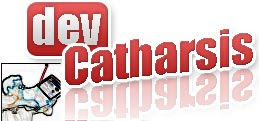In this fabulous article (presently as WIP), Fowler presents us with different approaches over rich client architectures.
He ends the article stating:
In the past few years there's been a strong fashion for writing self-testing code. Despite being the last person to ask about fashion sense, this is a movement that I'm thoroughly immersed in. Many of my colleagues are big fans of xUnit frameworks, automated regression tests, Test-Driven Development, Continuous Integration and similar buzzwords.When people talk about self-testing code user-interfaces quickly raise their head as a problem. Many people find that testing GUIs to be somewhere between tough and impossible. This is largely because UIs are tightly coupled into the overall UI environment and difficult to tease apart and test in pieces.
Sometimes this test difficulty is over-stated. You can often get surprisingly far by creating widgets and manipulating them in test code. But there are occasions where this is impossible, you miss important interactions, there are threading issues, and the tests are too slow to run.
As a result there's been a steady movement to design UIs in such a way that minimizes the behavior in objects that are awkward to test. Michael Feathers crisply summed up this approach in The Humble Dialog Box. Gerard Meszaros generalized this notion to idea of a Humble Object - any object that is difficult to test should have minimal behavior. That way if we are unable to include it in our test suites we minimize the chances of an undetected failure.
The Humble Dialog Box paper uses a presenter, but in a much deeper way than the original MVP. Not just does the presenter decide how to react to user events, it also handles the population of data in the UI widgets themselves. As a result the widgets no longer have, nor need, visibility to the model; they form a Passive View, manipulated by the presenter.
This isn't the only way to make the UI humble. Another approach is to use Presentation Model, although then you do need a bit more behavior in the widgets, enough for the widgets to know how to map themselves to the Presentation Model.
The key to both approaches is that by testing the presenter or by testing the presentation model, you test most of the risk of the UI without having to touch the hard-to-test widgets.
With Presentation Model you do this by having all the actual decision making made by the Presentation Model. All user events and display logic is routed to the Presentation Model, so that all the widgets have to do is map themselves to properties of the Presentation Model. You can then test most of the behavior of the Presentation Model without any widgets being present - the only remaining risk lies in the widget mapping. Provided that this is simple you can live with not testing it. In this case the screen isn't quite as humble as with the Passive View approach, but the difference is small.
Since Passive View makes the widgets entirely humble, without even a mapping present, Passive View eliminates even the small risk present with Presentation Model. The cost however is that you need a Test Double to mimic the screen during your test runs - which is extra machinery you need to build.
A similar trade-off exists with Supervising Controller. Having the view do simple mappings introduces some risk but with the benefit (as with Presentation Model) of being able to specify simple mapping declaratively. Mappings will tend to be smaller for Supervising Controller than for Presentation Model as even complex updates will be determined by the Presentation Model and mapped, while a Supervising Controller will manipulate the widgets for complex cases without any mapping involved.
And finally, don't miss this contribution from acknowledgements:
... Many people in those days considered it impractical to use a virtual machine. I wonder what our prior selves would have thought to see me running Smalltalk 80 in a virtual machine written in VisualWorks running in the VisualWorks virtual machine on Windows XP running in a VMware virtual machine running on Ubuntu.
Here's virtual to you :)


No comments:
Post a Comment